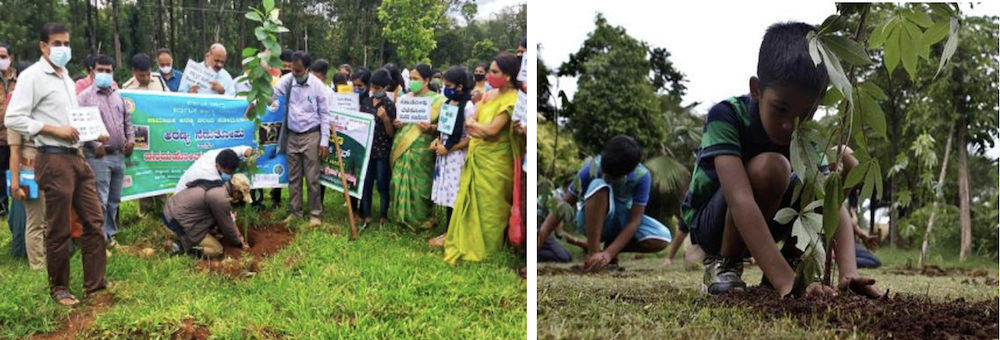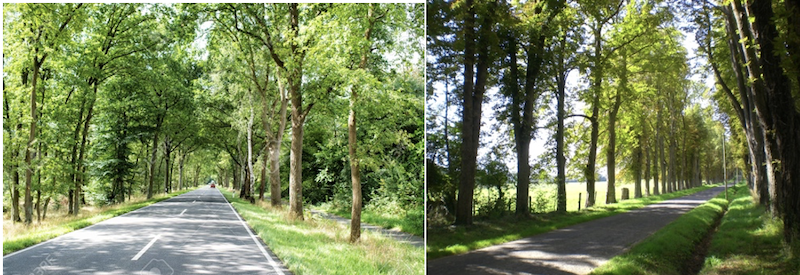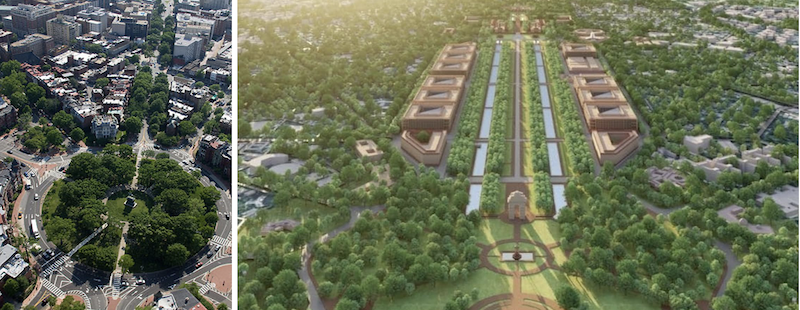👥 Social Forestry
Definition, Types and Purpose

- Social forestry may be defined as the science and art of growing trees in and outside traditional forest areas and managing like existing forest with intimate involvement of the people and more or less integrated with other operation resulting in balanced and complementary land used with view to provide wide range of goods and services to the individual as well as to the society.
- It is also called as
Community forestry. Community forestry is defined as the practice of forestry on community lands with the participation of people or community. - Example: ‘Van Mahotsav’.
- Social forestry is the practice of forestry on lands outside the conventional forest area for the benefit of the rural and urban communities.
- The term was coined by forest scientist
J.C. Westobyin1976. It was first recognized as an important component of forestry for meeting rural needs in the interim report of the National Commission on Agriculture (NCA, 1976). - The objectives of social forestry adopted by the NCA were to fulfill the basic and economic needs of the community.
- The scope of social forestry defined by the NCA included farm forestry, community woodlots and reforestation in degraded lands.
- By mid-1980, the concept of social forestry was firmly established as forestry of the people, by the people and for the people.
Farm Forestry

- Farm forestry is the practice of forestry on farms in the form of raising rows of tree on bunds or boundaries of field and individual trees in private agriculture land as well as creation of wind breaks, which are protective vegetal screens created round a farm or an orchard by raising one or two lines of trees fairly close with shrubs in between.
- Growing forest trees by farmers on their own land.
- It may be for commercial or non-commercial.
- This includes wind breaks or shelterbelts.
Recreational Forestry

- Recreational forestry practice of forestry with the object of raising avenue/flowering trees and shrubs mainly to serve as recreation forests for the urban and rural population.
- This type of forest is also known as
Aesthetic forestrywhich is defined as the practice of forestry with the objective of developing or maintaining forest of high scenic value. - The profession dealing with maintenance of ornamental tress is called
Arboriculture.

Extension Forestry

- The practice of forestry (grow trees and shrubs) in areas devoid of tree growth and other vegetation situated in places away from the conventional forest areas with the objective of increasing area under tree growth.
- It includes following:
- Mixed forestry: It is the practice of forestry for raising fodder grass with scattered fodder trees, fruit trees and fuel wood trees on suitable wastelands, panchayat lands and village commons.
- Shelterbelts: Shelterbelts is defined as ‘a belt of trees and/or shrubs’ maintained for the purpose of shelter from wind, sun, snow-drift, etc. they are generally more extensive than the wind-breaks covering areas larger than a single farm and sometimes whole regions on a planned pattern.’ or Shelterbelt is wide belt of tree, shrubs and grasses which goes right across the land at right angle to the direction of prevailing wind in order to:
- Reduce wind velocity
- Deflect wind current
- Protect public properly in leeward side
- Wind breaks: It is a protective planting around a garden, a farm or a field to protect it against strong winds. It usually consists of 2-3 rows of trees or shrubs, spaced at 0.5 m to 2.5 m apart, depending on the species.
- Linear Strip Plantations: These are the plantations of fast-growing species on linear strips on land e.g., along roads / Canals / railway tracks.
- Environmental Forestry (Around Industrial complex)
- Avenue: An avenue is the row of trees grown on both sides of roads. Shade and beauty are the sole criteria to be considered while selecting avenue trees. The trees should also be selected according to the length and breadth of the road.

- Community Woodlots: The community woodlots, consists of plantations of fuelwood species on community village lands, with intended objective of increasing a villager’s access to fuel wood, fruits and fodder.
Restoration/Rehabilitation of degraded forests

- Protection of land, regulation of water cycle, wildlife conservation modernization of climate conditions, combination of above.
- Ex. Buddha Jayanti Park at new Delhi.
- The interim report of the NCA, 1976 suggested reforestation of degraded forests to achieve the following objectives:
- To grow short rotation fuel and timber species for meeting the requirements.
- To organize fuelwood supplies at reasonable rates, this will prevent pilferage from neighboring commercial forests.
- To tie up degraded forest areas with the nearby rural and semi-urban centers for their requirements of fuelwood.
- To provide employment.
- To rehabilitate the degraded forests in the process.
Urban Forestry

- Management of public and private owned lands in and adjacent to urban centers.
- They have more aesthetic value.

- Social forestry may be defined as the science and art of growing trees in and outside traditional forest areas and managing like existing forest with intimate involvement of the people and more or less integrated with other operation resulting in balanced and complementary land used with view to provide wide range of goods and services to the individual as well as to the society.
- It is also called as
Community forestry. Community forestry is defined as the practice of forestry on community lands with the participation of people or community. - Example: ‘Van Mahotsav’.
- Social forestry is the practice of forestry on lands outside the conventional forest area for the benefit of the rural and urban communities.
- The term was coined by forest scientist
J.C. Westobyin1976. It was first …
Become Successful With AgriDots
Learn the essential skills for getting a seat in the Exam with
🦄 You are a pro member!
Only use this page if purchasing a gift or enterprise account
Plan
Rs
- Unlimited access to PRO courses
- Quizzes with hand-picked meme prizes
- Invite to private Discord chat
- Free Sticker emailed
Lifetime
Rs
1,499
once
- All PRO-tier benefits
- Single payment, lifetime access
- 4,200 bonus xp points
- Next Level
T-shirt shipped worldwide

Yo! You just found a 20% discount using 👉 EASTEREGG

High-quality fitted cotton shirt produced by Next Level Apparel